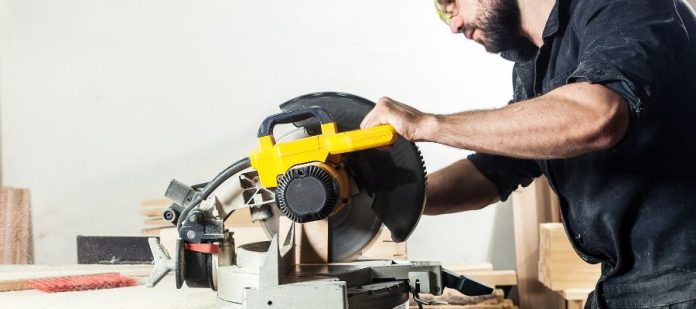Choosing the do-it-yourself route on home improvement projects can be fun and exciting. Taking matters into your own hands can save a good chunk of change instead of paying hundreds of thousands of dollars for labor. However, skilled hands will do the job safely and proficiently, while you might be unsuccessful doing it alone. At the very least, it’s important to be aware of the five most common DIY injuries and how to avoid them while working.
1) Slips and Falls
Some DIY projects may feel like multiple banana peels are on the ground based on the number of slips and falls that can happen. When you add water to the mix, the potential for danger worsens. For example, working on leaky plumbing could take you out if you make one misstep.
You can lay down a cloth or towel to step on a dry surface rather than slippery tile or hardwood floor. A mat or a bed of towels will keep you from leaving wet footprints throughout the area by keeping your shoe soles dry.
2) Vision Impairments
With the sawing, dusting, and blasting that occurs during DIY projects, you must protect your eyes at all costs. All it takes is one itty-bitty dust particle to go into your eyes and cause vision problems, which is why many folks are better off never attempting to DIY sandblast. Even when you think eye protection isn’t necessary, err on the side of caution.
Never do a home improvement job without donning safety goggles. Yes, goggles, not eyeglasses or shades. If you don’t like wearing goggles over your spectacles, consider prescription goggles, especially if you’re an avid DIYer.
3) Improper Carrying Techniques
When dealing with heavy items or equipment, you must plan for flawless execution. Do not try to “hulk up” and carry something yourself if you are straining every muscle in your body. Good posture is paramount when performing manual labor, so hold objects no higher than your shoulder without overextending the arms. Keep your back straight, always kneel, and lift with your legs—your back will thank you!
4) Burns
Jim Carrey’s “Fire Marshall Bill” character from In Living Color always reminds you to stay safe when working with potential fire and burn hazards. Although, he would do the opposite. Still, you’re not Bill, and you shouldn’t take any shortcuts if a potential fire could ignite or you leave yourself vulnerable to burns.
Any DIY project that requires you to fiddle with electrical wiring could cause a small spark that leads to a flame. Therefore, turn off all power sources before operating on electrical systems.
5) Lacerations and Bug Bites
One miscut of wood or other material could lead to a cut somewhere else—like on your body. Additionally, using dull cutting tools puts you at a greater risk of slipping off the workpiece and injuring yourself since you must push down harder than usual.
Bug bites are other causes for concern during DIY projects. You never know what’s in the dirt or if you will irritate a hive or nest. These little critters can be ferocious if provoked!
Safe habits are the best way to avoid the five most common DIY injuries. If you ask yourself, “Is this safe?” and your inner monologue tells you, “No,” listen to that voice so you don’t become another statistic.

























